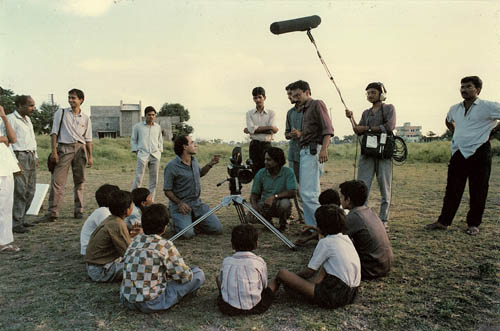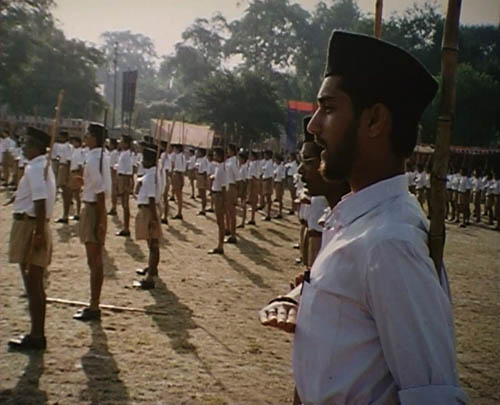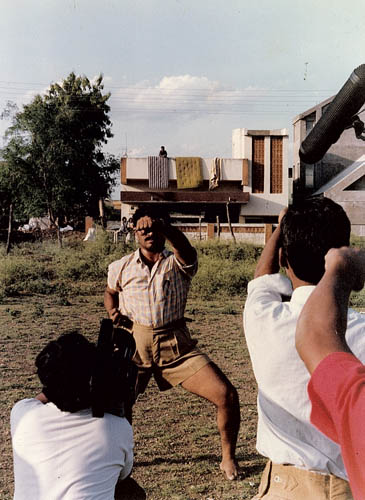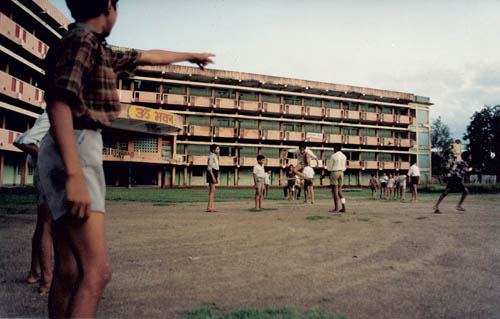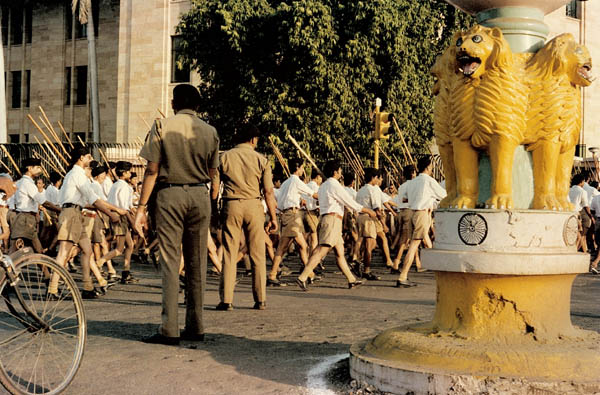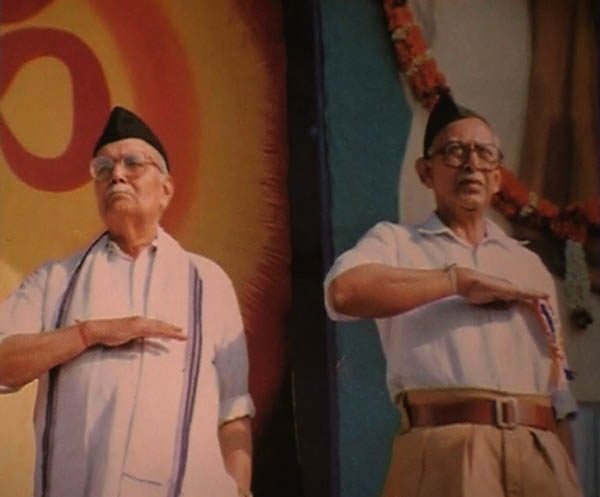LALIT VACHANI: FILMS
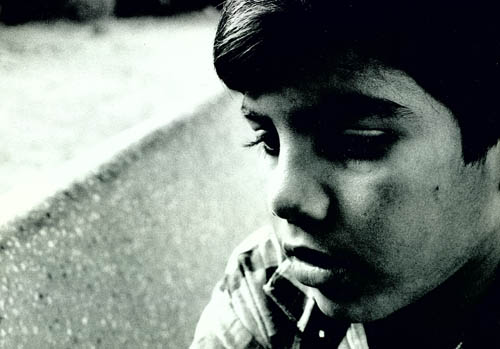 |
|
In October 1992, Lalit Vachani and the Wide Eye Film team were filming The Boy in the Branch. At the time, Kali, the central character of the film, was nine years old. He had joined the RSS branch because it was a fun place where children could play games after school every day. |
|
Sandeep, twenty-one years old, spoke about his devotion to the Hindu nationalistcause, and how he would spend his life serving the RSS. |
|
Sripad, an RSS martial arts expert (nineteen at the time) was passionate about building his own body and building the Hindu nation. And Lalit, age eighteen, was a gentle, atypical volunteer who disliked the physical program of the RSS, even though he was assigned to train the younger boys in Karate. |
|
We had entered RSS territory expecting to confirm our received images of fascism. Instead, what we found was far more ingenious and unsettling in its simplicity: the lure of a playground where young boys played games and the hopes and dreams, fears and anxieties of ordinary young people as the banal face of fundamentalism. On December 6th, 1992, 45 days after the shoot when the film was near completion, members of the RSS and its affiliates destroyed the Babri mosque at Ayodhya. |
|
Where were Lalit, Kali, Sripad, and Sandeep when the mosque was razed to the ground? What did they think about the deaths of at least 1500 people (mostly Muslim) in the riots that followed the demolition? What had happened to them since that time, as the RSS and Hindu nationalism moved from the margins to the center of Indian politics, from an oppositional movement to the ideology of the government presently in power? Eight years later, we returned to Nagpur in search of Kali, Sandeep, Sripad and Lalit. |
|
Combining the conventions of the political documentary and the personal 'revisit', The Men in the Tree is a documentary in four parts: Part I, Memories (22 min.) is a personal reflection on the making of the earlier film, The Boy in the Branch. Part II, Buildings (24 min.) builds on the characters of The Boy in the Branch, in that we meet Sandeep, Sripad and Kali in the present, after a gap of eight years. However, it is primarily about the making and the breaking of various buildings, the most prominent one being the Babri mosque, destroyed in December 1992. Part III, Stories (32 min.) is the talking heads/information section of the film. It is about the kind of stories that circulate within the RSS branch and broader RSS culture and the attempts by RSS ideologues to rewrite and Hinduize a secular Indian history. Former RSS volunteers, D.R. Goyal and Purshottam Agarwal provide an internal critique and a framework to understand the ambivalence of the RSS to national leaders like Mahatma Gandhi and contextualize the RSS hostility towards Muslim and Christian minorities in India. Part IV, Branches (20
min.) is about the state of RSS branches in contemporary India
in the form of a return to the branches that the team filmed in
1992.
|
